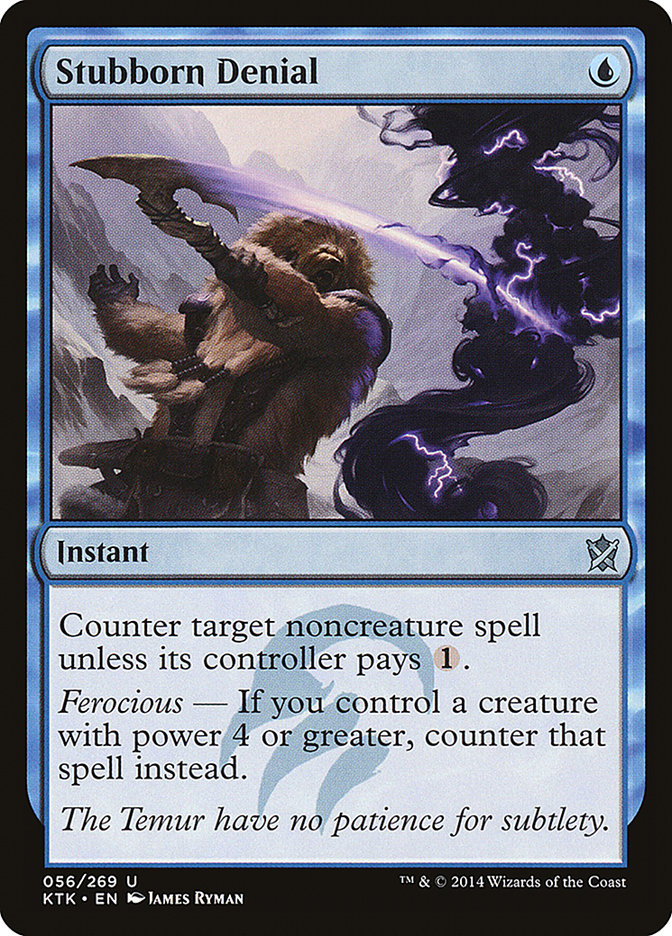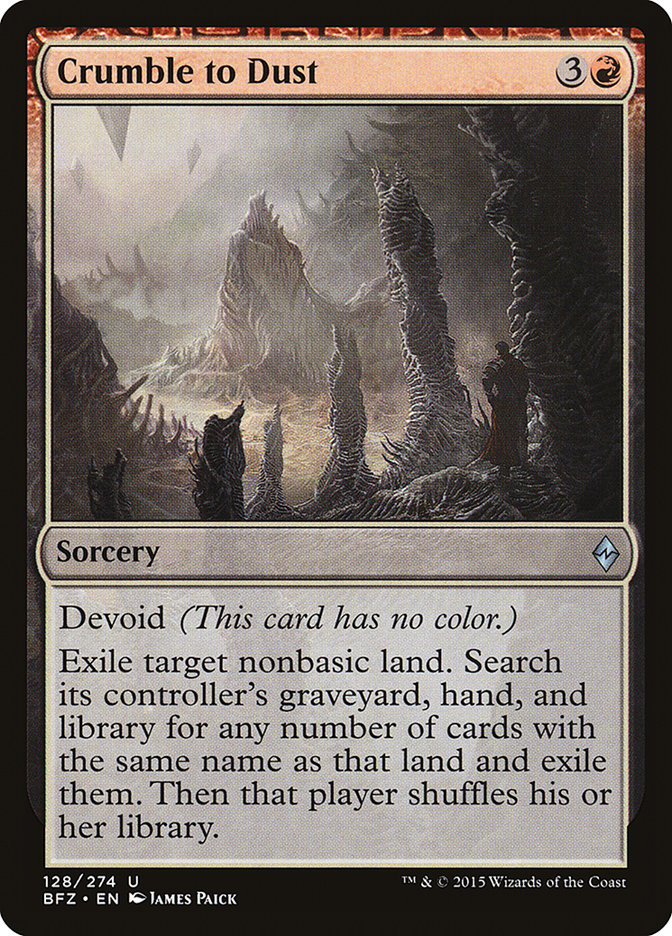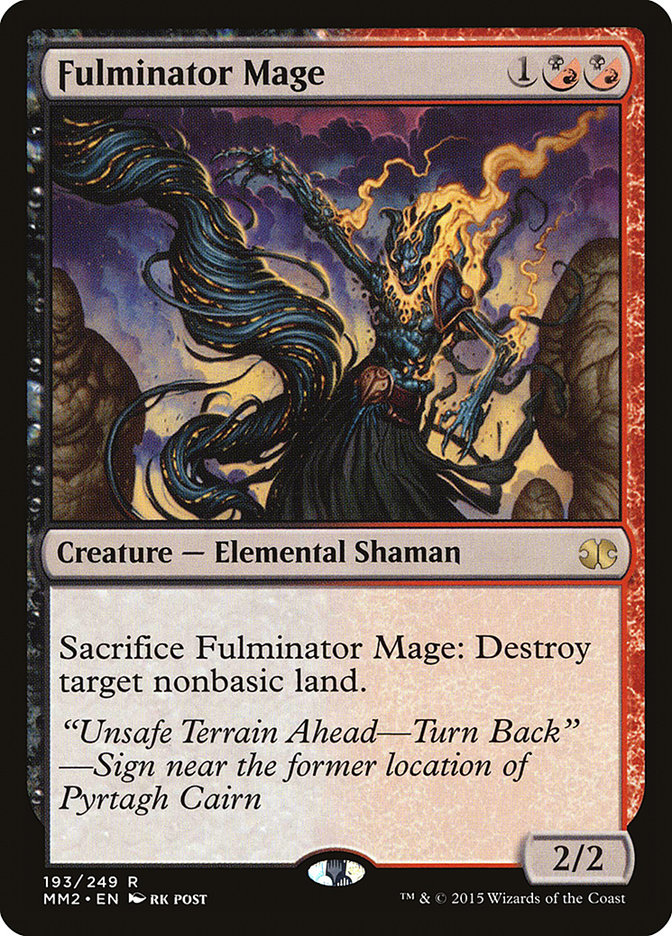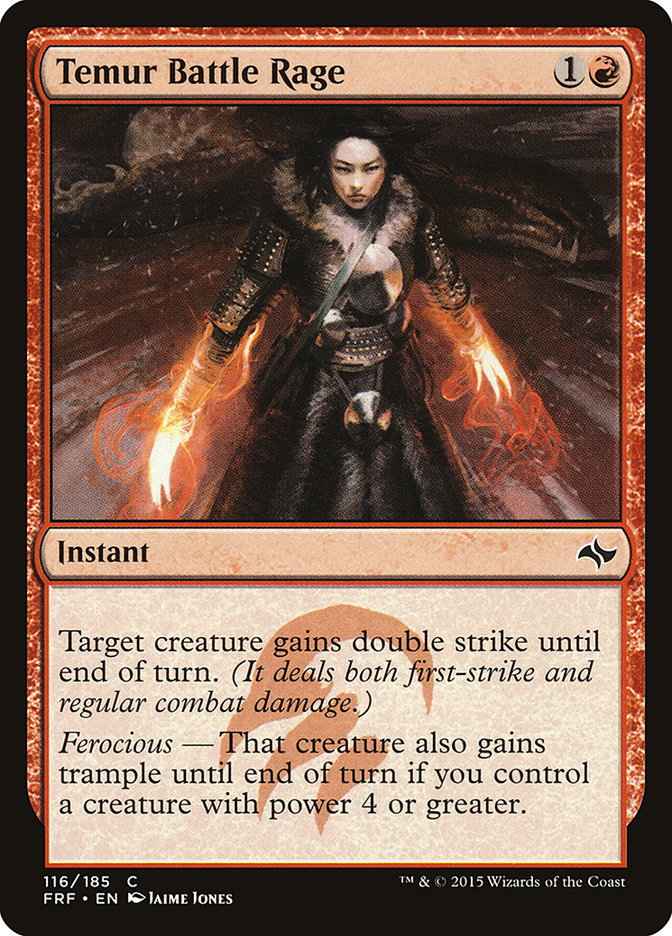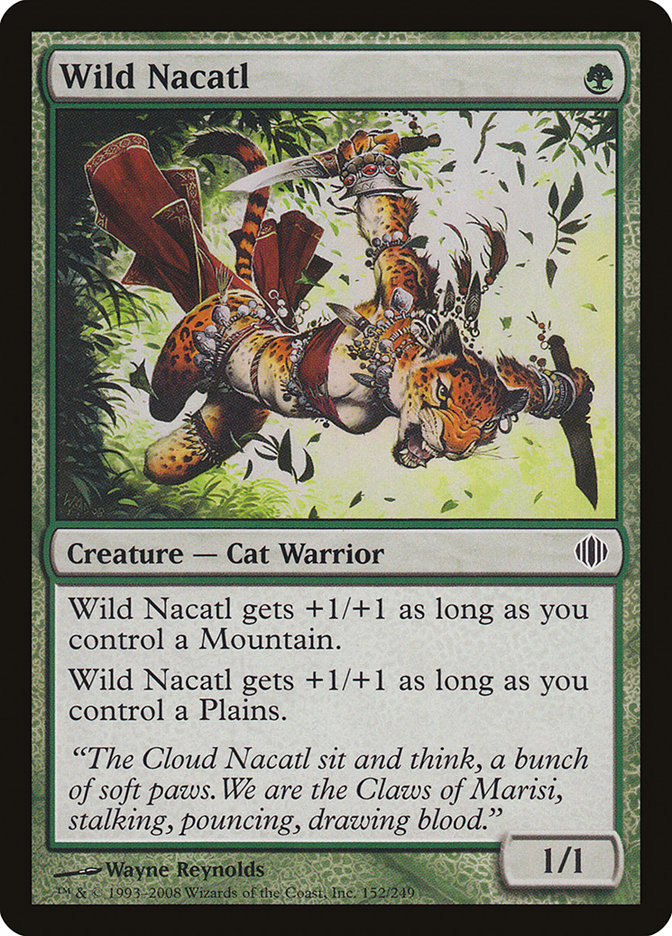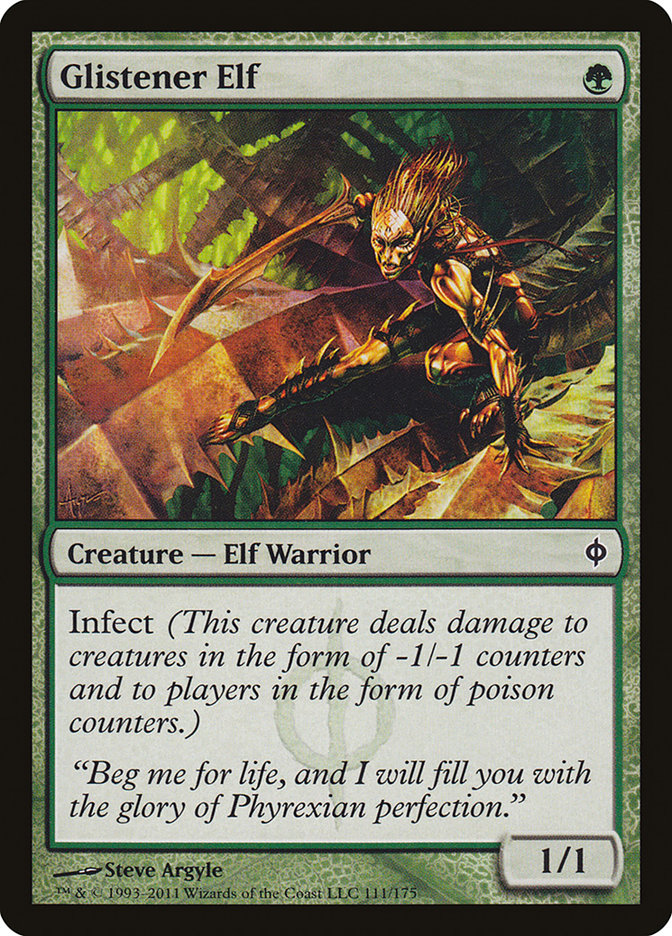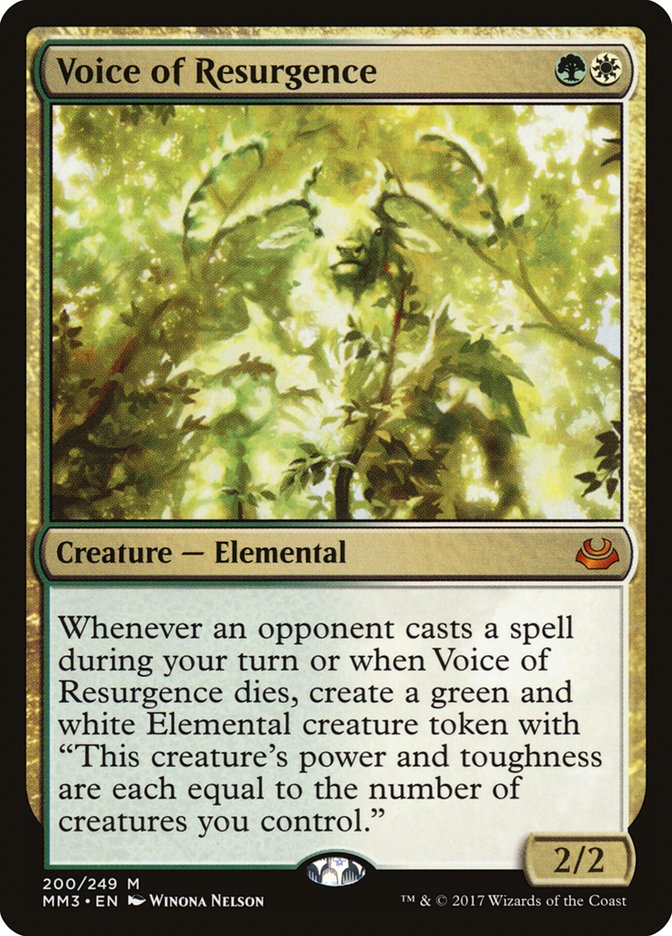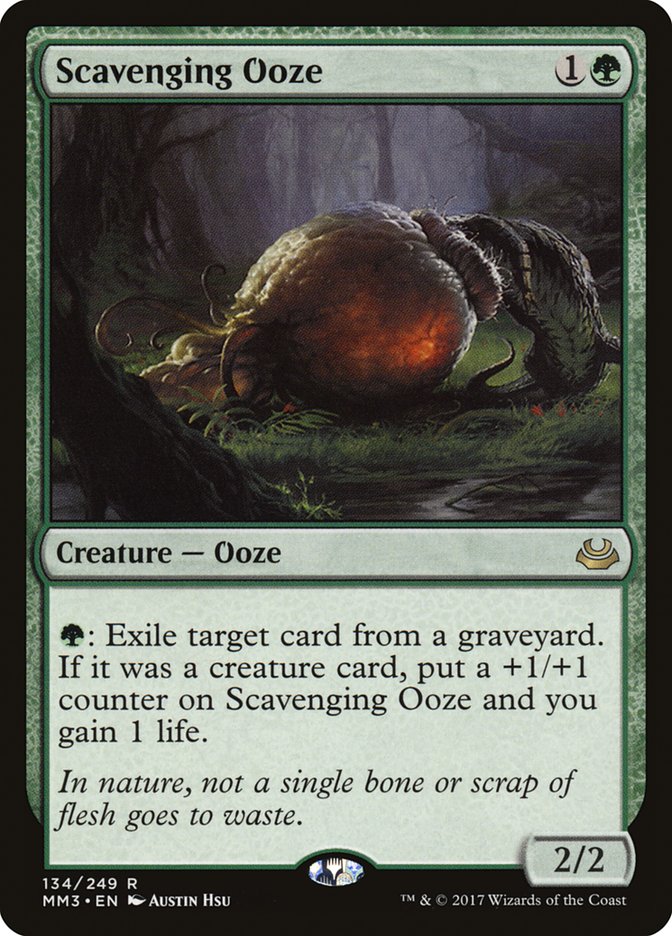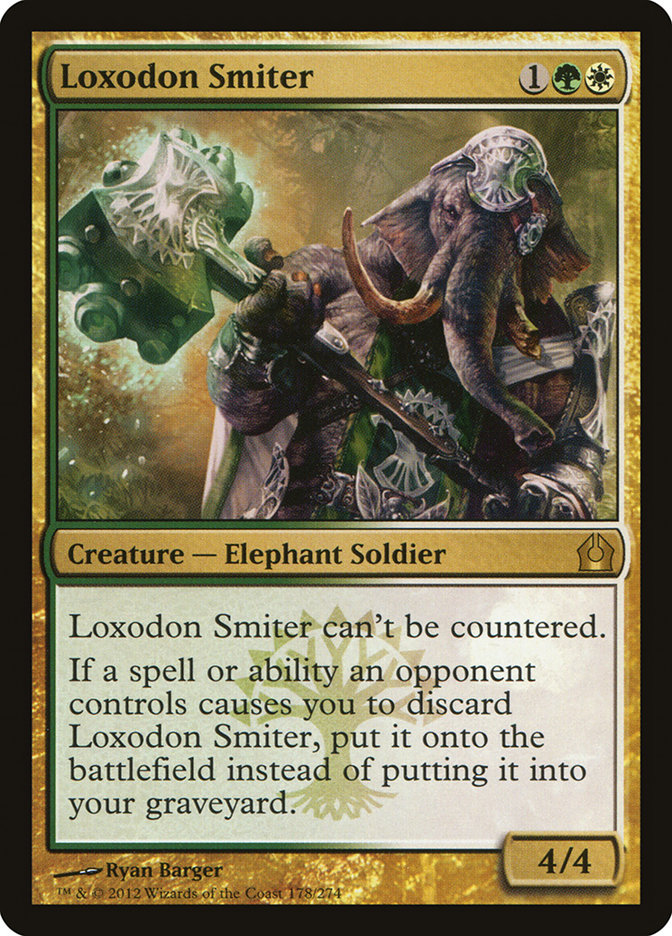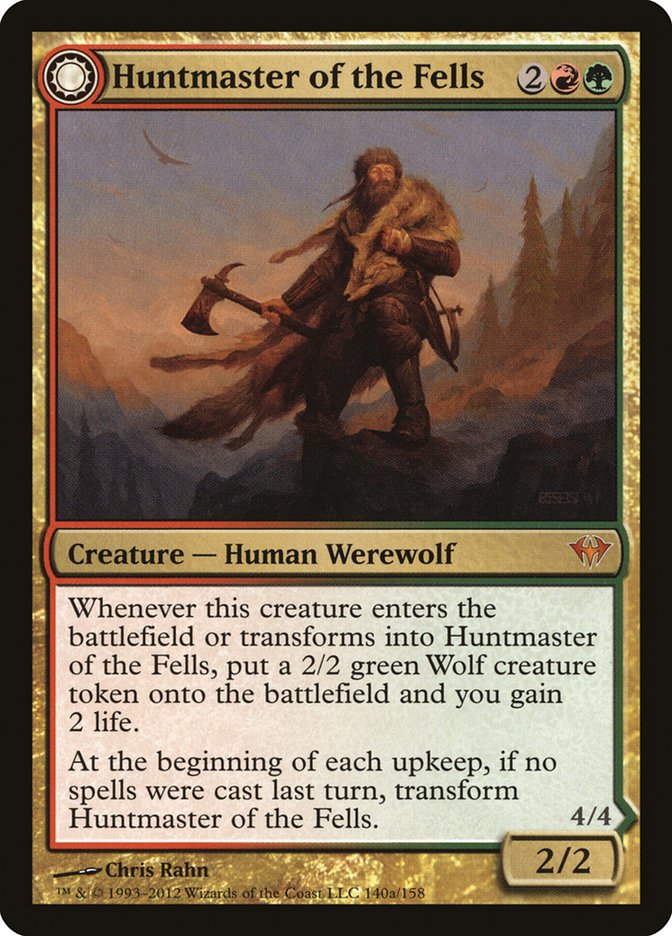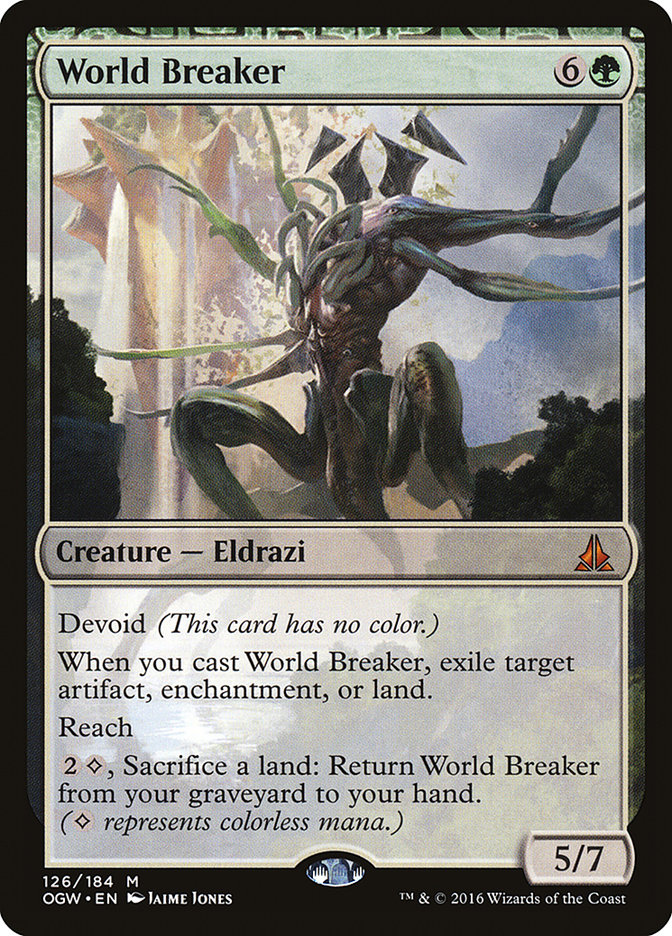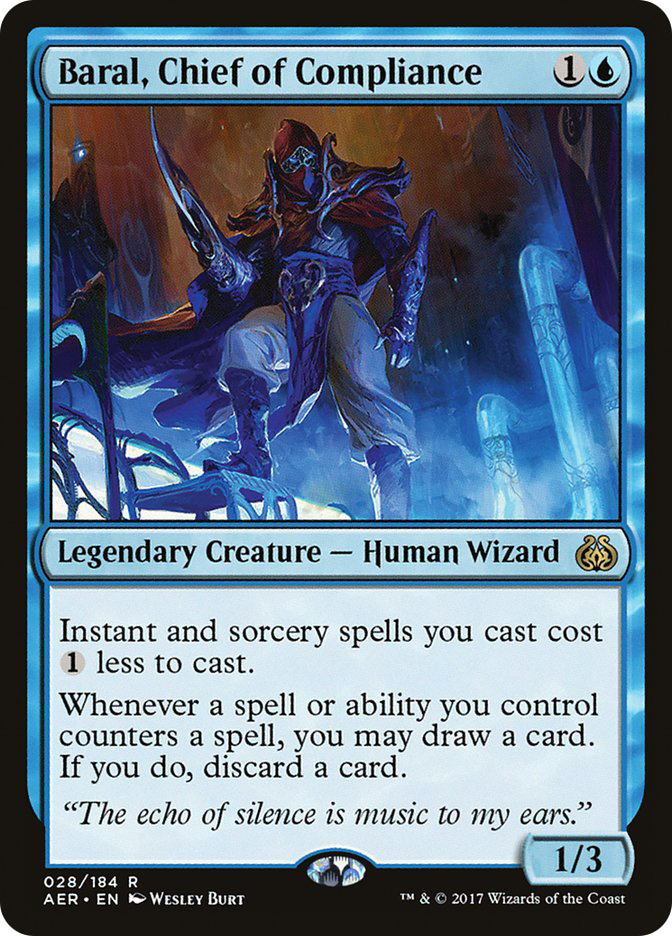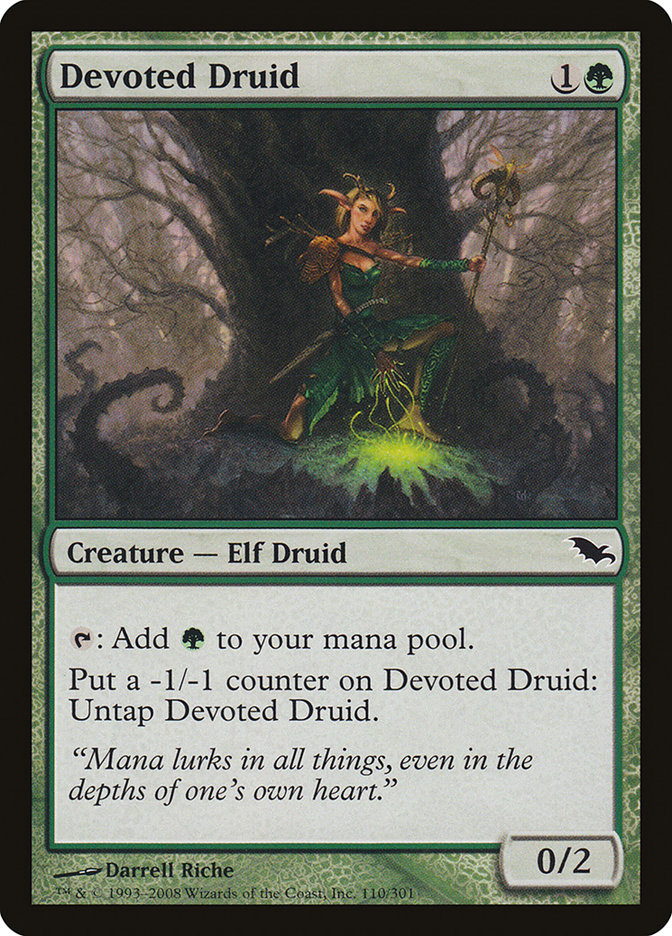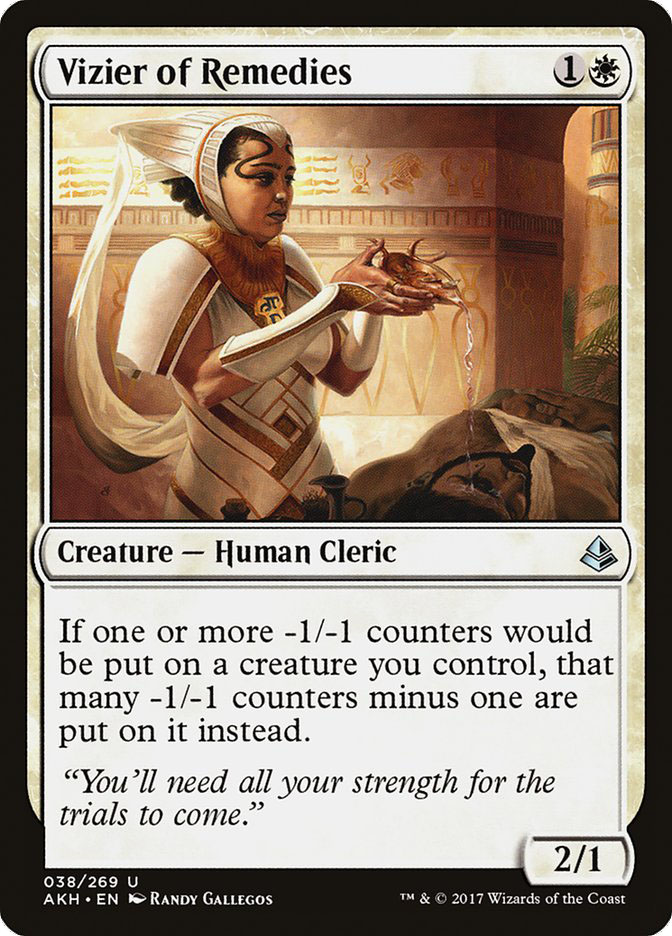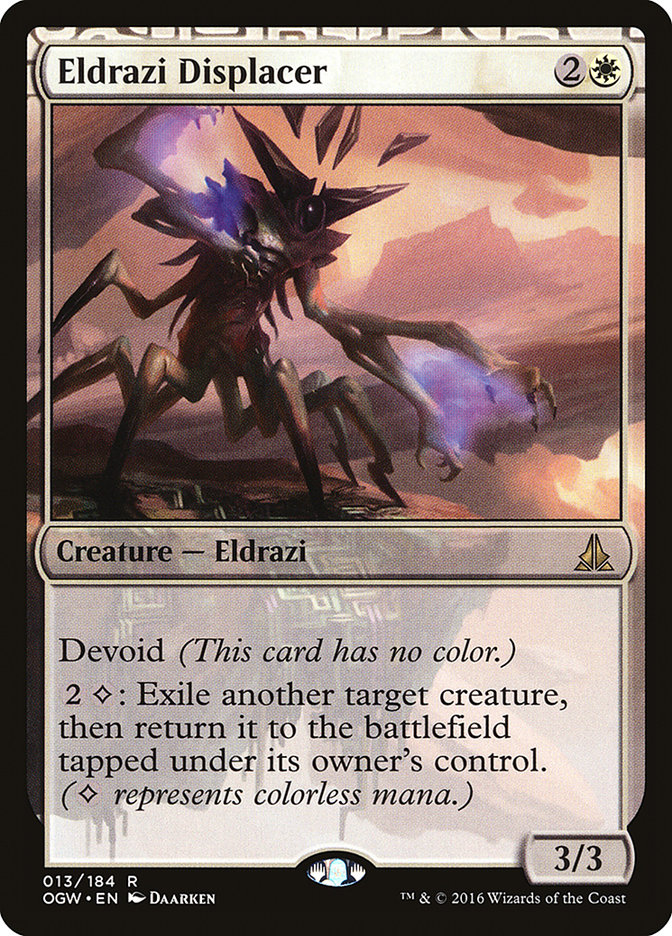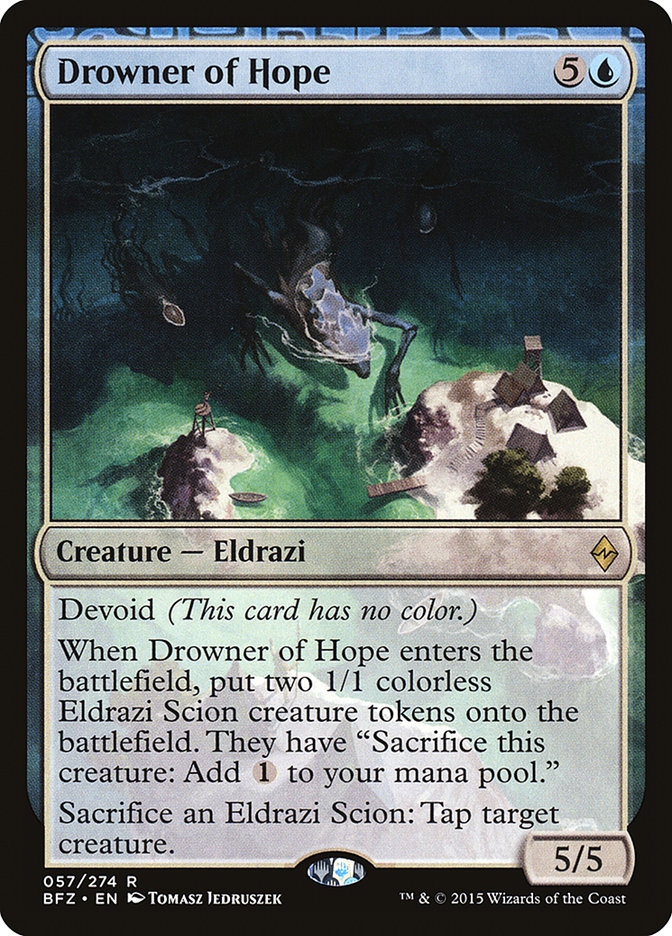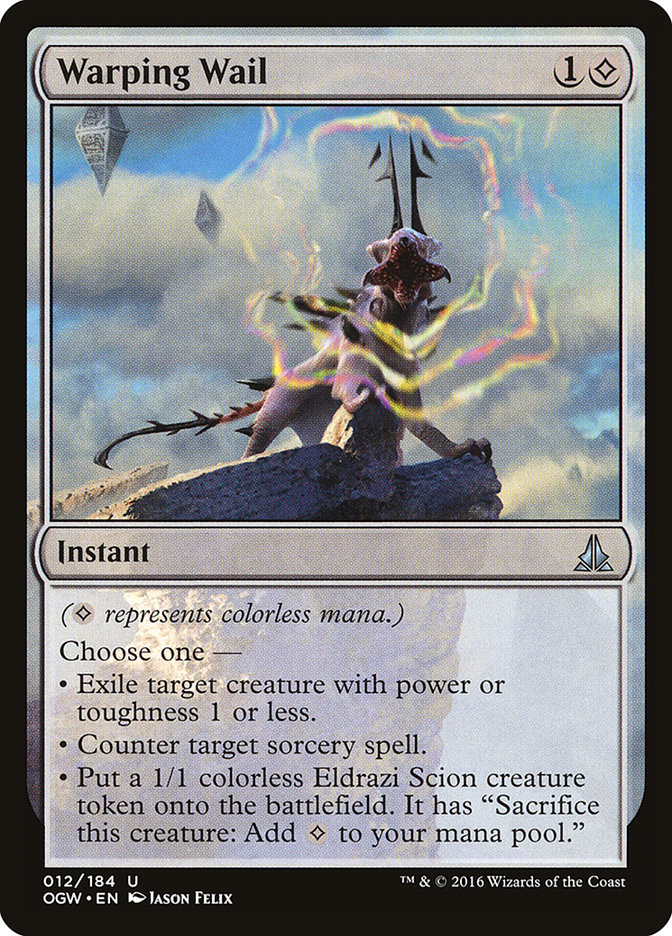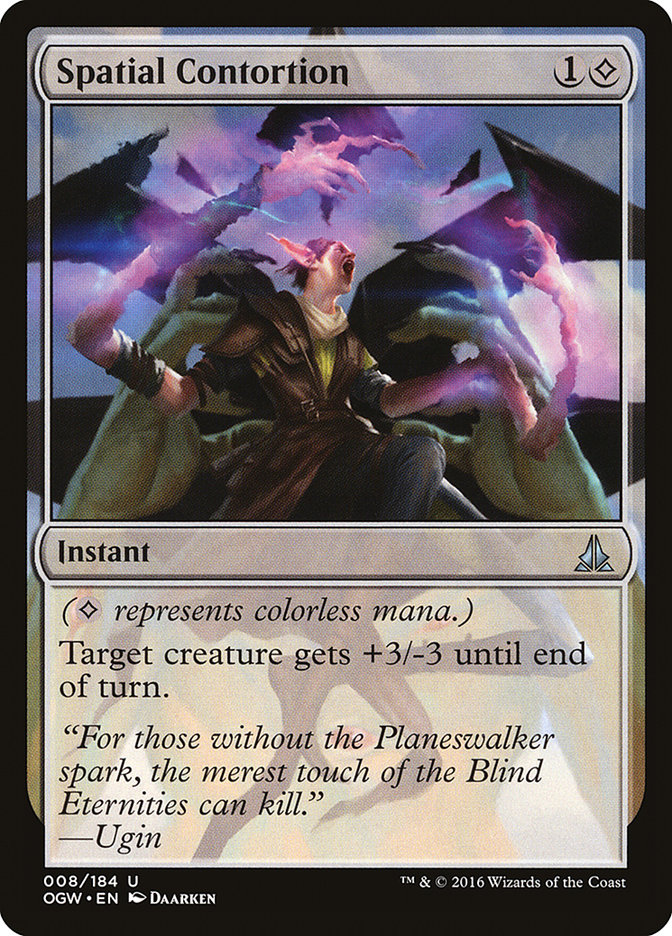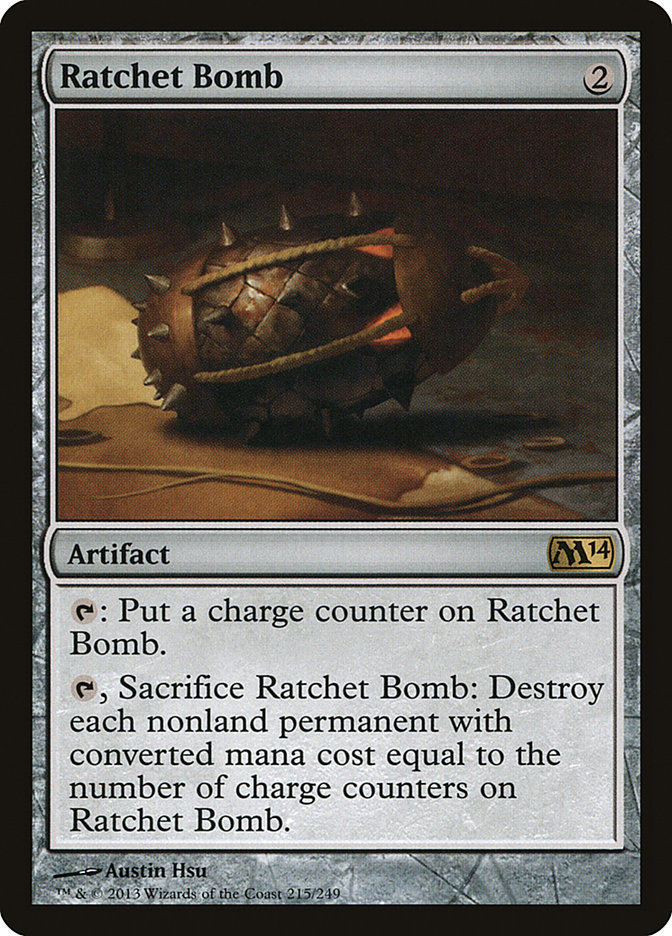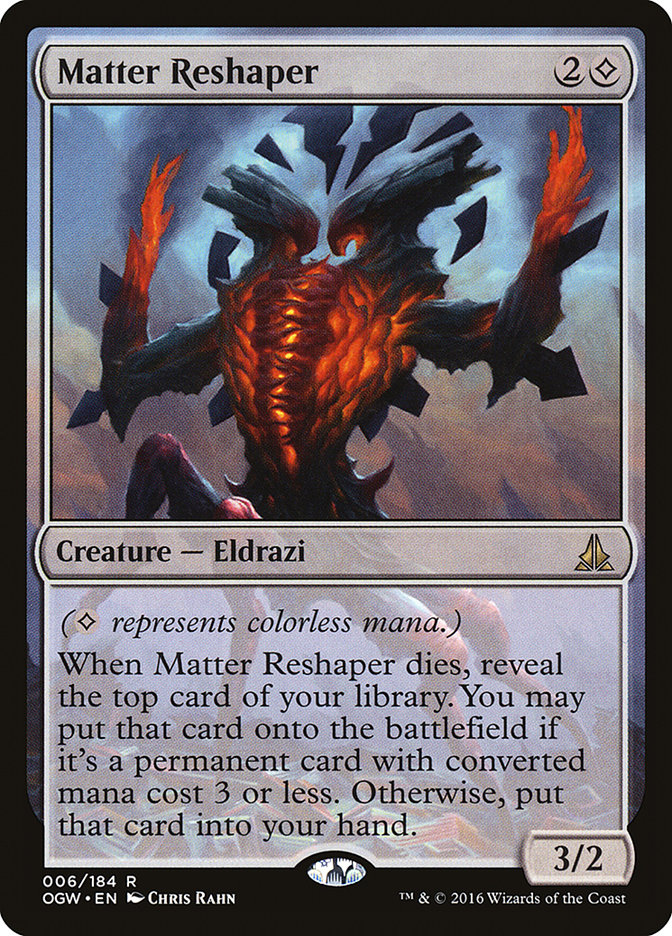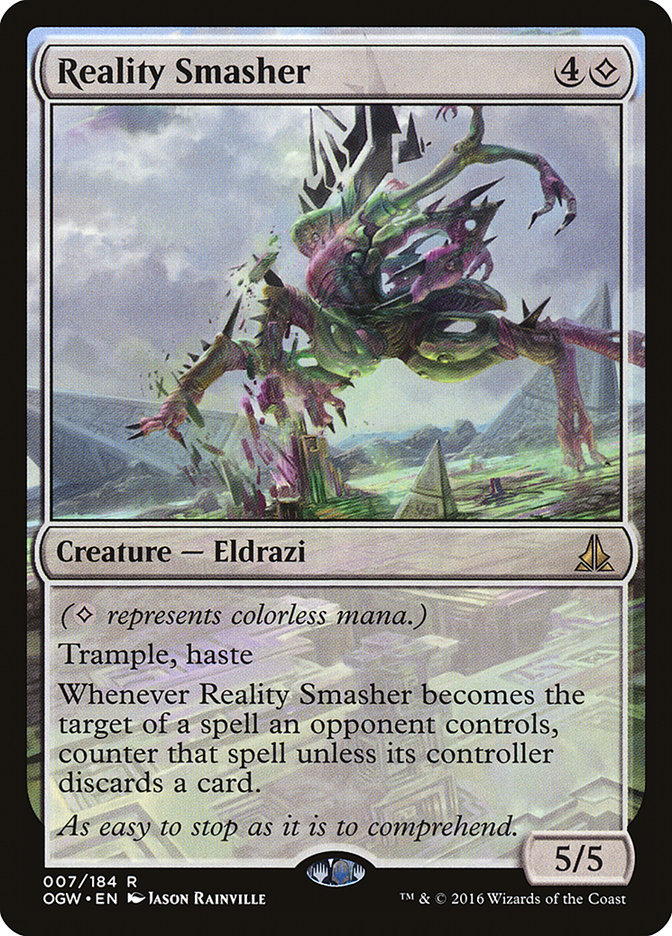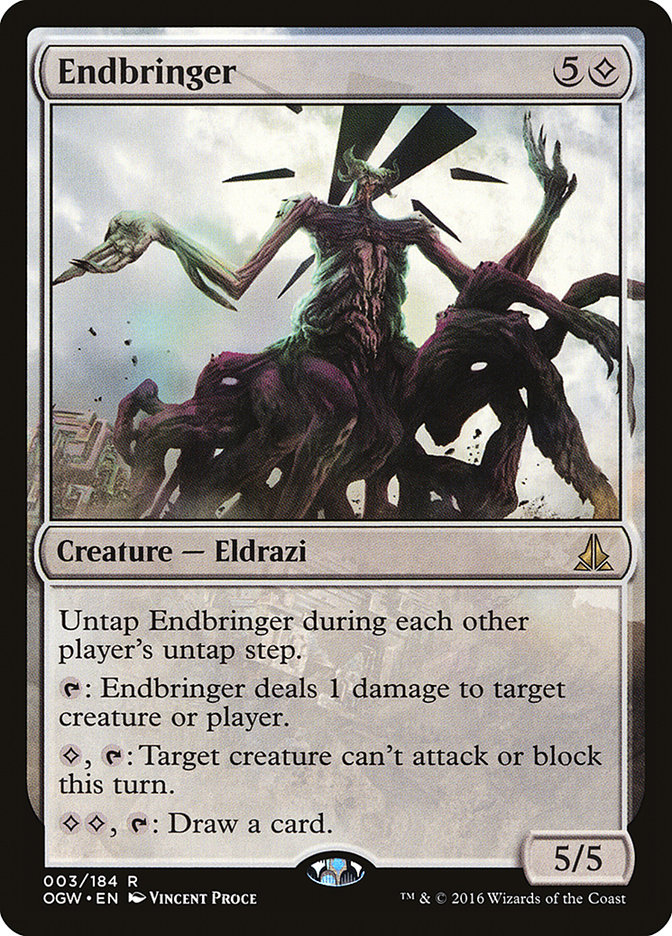This past weekend at #SCGKY was a blast, where #TeamDapper (formed of yours truly, Brennan DeCandio, and Tannon Grace) rattled off seven wins in a row from the end of Day 1 into Day 2 to make the Top 8. This will probably be of no surprise to anyone reading this, but team events are simply the best. There’s a sense of comradery and positivity in the room during team events that’s unlike individual tournaments, especially between rounds, where different teams will mingle and share amusing anecdotes about the weekend. This level of socialization alone makes the winning more enjoyable and the losing easier to deal with, and I can’t recommend playing in a team tournament with your friends enough. The next StarCityGames.com Team Constructed Open is almost exactly two months away in Atlanta, GA, and there is no event I’m looking more forward to right now.
With all of that being said, I wanted to start my article today talking about my deck of choice from #SCGKY this past weekend, Eldrazi Tron, before getting into a recent development of the Modern format. Although our team wavered back and forth on whether Tannon Grace or Brennan DeCandio would play Standard or Legacy, there was never a mention that I would be playing a format other than Modern. Modern has turned into my favorite format and the one that I have played almost exclusively this year. There was probably no one happier than me when the SCG Tour announced the majority of events in Season Two would feature Modern. So since we all knew right away that I would be the Modern player on our team, I had to decide on what deck I believed would give our team the best chance to win the tournament.
Creatures (12)
Planeswalkers (2)
Lands (18)
Spells (28)

Last week, when I wrote about the best decks in Modern, Death’s Shadow had a tier all to itself above the rest of the metagame. I truly believe the Death’s Shadow decks are simply the best in the format, which naturally led me to want to play one.
Stubborn Denial is by far my favorite card in Grixis Death’s Shadow, but aside from that I like Jund Death’s Shadow much more because of being able to use Traverse the Ulvenwald to act as more copies of Death’s Shadow. I also prefer Tarmogoyf as a secondary threat to Tasigur, the Golden Fang or Gurmag Angler. It’s already been proven that splashing a fourth color in the Death’s Shadow lists is fairly easy, with most people splashing white for sideboard cards built to win a long game. So I decided to put Stubborn Denial into the maindeck of Jund Death’s Shadow, and I was very pleased with the performance of the blue instant. Leading up to the Monday before #SCGKY, I was pretty sure I would be playing Four-Color Death’s Shadow, and I guess maybe I should have, since it won the tournament!
Creatures (12)
Planeswalkers (3)
Lands (18)
Spells (27)

Although I was having pretty good success with the deck on Magic Online, I knew I was a couple of cards off from having an optimal list. It’s incredibly hard to find the optimal cards when having the selection of four different colors in a format as large as Modern, and I knew I would need to have much more practice with the deck then the time I had available to figure it out. I don’t think Clay’s build here is optimal, either, as I consider Temur Battle Rage a necessity, but thankfully having an optimal build is not a prerequisite to winning a tournament. The other part of needing more practice with the deck was that I really wasn’t happy with my technical play with the deck. I wasn’t confident in my ability to pilot the deck optimally, and I therefore decided to go back to the deck I have had the best results with since the release of Aether Revolt.
Creatures (19)
Planeswalkers (2)
Lands (24)
Spells (15)

Eldrazi Tron unfairly gets a bad rap from players who complain about the inconsistencies of the deck and the low percentage it has of being able to assemble the three different Tron lands compared to traditional G/X Tron decks. There’s no denying the discrepancies of the power level between opening hands will be vast with the deck, but I’m fine with it because you aren’t reliant on having access to the extra mana from the Tron lands to win. Sure, your win percentage is incredibly high when you do have Tron online, but even when you don’t, you can still act as a normal midrange deck that has threats capable of winning games.
Another big strength to Eldrazi Tron is that opponents don’t usually have good sideboard cards against you. Most people try to attack your manabase post-sideboard, which makes some sense considering the density of spells that cost four or more mana in the deck. What most people don’t realize is that using time and resources to attack Eldrazi Tron’s manabase is exactly the type of game that Eldrazi Tron wants to play.
If you look at my decklist above, I have 24 lands, including four that essentially tap for two mana immediately, as well as four Expedition Maps to find more lands and three Mind Stones. That’s over half of the deck that is designed to help generate mana, and trading lands for the opponent’s time and spells as they cast Stone Rains is exactly where I want to be when playing Eldrazi Tron.
The single card I want to see the most when playing Eldrazi Tron is Blood Moon, and there isn’t a card my opponent could play that I have a higher win percentage against when facing it in the entire format. Blood Moon is a three-mana investment, and a full card, that only has the impact of slightly slowing Eldrazi Tron down. Between having two basic Wastes, four Expedition Maps to find them, and three Mind Stones, not having access to colorless mana is very rarely an issue. The only way Blood Moon can be effective is if it does completely shut off colorless mana and I have multiple of the fifteen cards that require colorless mana stuck in hand, or if it is accompanied by a fast clock that doesn’t allow All Is Dust or Karn Liberated to be cast, which is rare to have when taking a turn off to cast Blood Moon.
I got off on a tangent a little bit there, but hopefully I established that Eldrazi Tron is a regular midrange deck that has an exceptional ceiling and is difficult to sideboard against. That all sounds well and good, but the question I get very often is why play Eldrazi Tron over Bant Eldrazi, a deck I praised highly earlier in the year? The reason is the devaluation of the combat step in Modern.
Take a look at the decks that I listed to be in the top two tiers of Modern last week. Building a deck to dominate the combat step is less important now than ever before in my experience with Modern, dating back to the end of 2015. Most of the top-tier decks are able to win the game through another means than simply attacking. So what change happened to Modern all of a sudden?
“But Todd, you blame everything on Death’s Shadow these days. This can’t be its fault also! It’s just a vanilla creature that attacks and blocks!”
Well, for better or for worse, Death’s Shadow is the biggest reason why attacking and blocking has gone out of style. It turns out that winning through combat is extremely difficult when a one-mana creature is the largest creature in the format. Reality Smasher used to be one of the biggest threats of the format, but against Jund Death’s Shadow, I sideboard them out because neither attacking nor blocking is something I want to do with a 5/5 against them, which is pretty insane. If you don’t swing for lethal, you’ll only make their Death’s Shadow larger.
With the release of Aether Revolt, black received a top-tier removal spell to go along with hyper-efficient discard spells that it already had, and therefore double blocking a large creature, presumably Death’s Shadow, has never been more difficult. Similarly, Temur Battle Rage makes even chump blocking a hopeless ordeal and can oftentimes deal upwards of twenty damage by itself when cast on a blocked Death’s Shadow.
Death’s Shadow and Fatal Push have made both Wild Nacatl and Glistener Elf almost nonexistent in the current format. The latter was obviously hurt by the Gitaxian Probe ban, but I honestly think the printing of Fatal Push has hurt Infect more than Gitaxian Probe’s ban. Anyway it’s been a long time since I’ve seen either of these two one drops in action, and they were two of the best reasons to have creatures that could block down on the board immediately. With the value of combat lessoned, there are plenty of creatures that are getting pushed out of the format. For example [*winces*-Ed.]:
This is not a comprehensive list by any means, just some examples of cards whose values have decreased dramatically recently. Sure, most of them even have other uses besides just combat, which is why they have been varying degrees of Modern staples in the past. Scavenging Ooze is useful against graveyard-heavy strategies, but you’ll usually have to wait several turns until it can have a useful impact in combat. There are also plenty of artifacts and utility lands to exile with World Breaker, but I’ve seen it become a chump blocker to a one-drop more times than I’d like to admit. Death’s Shadow and Fatal Push are not the only reasons these previous midrange all-stars are fading away.
A couple of new two-drops have burst on to the Modern scene and have further devalued the reason to attack or block. If your opponent casts a Baral, Chief of Compliance or a Devoted Druid on turn 2, you can very likely be dead on turn 3 without worrying about an attack step. Needing interaction as early as turn 2 for these creatures has had a huge impact on both card and deck selection. I believe Counters Company and Storm are most likely the two best decks in the format after the Death’s Shadow variants, and these two creatures are the reason why. They force your opponent to have an answer for them on turn 2 just to continue playing the game.
In summation, playing creatures to the battlefield in hopes of controlling the game and winning combat has never been worse in Modern, well, since as far back as I’ve been playing the format in late 2015. No matter what your deck of choice is to pilot, make sure it is updated correctly to reflect on this. You need to be able to deal with specific combo threats from some decks or swarms of creatures from other decks.
Unfortunately, it looks like the good guys of Modern, the fair midrange Eldrazi with Eldrazi Displacer and Drowner of Hope, have some problems matching up in the format. Why use Eldrazi Scions to control the battlefield when your opponent can combo off with Baral, Chief of Compliance and kill you with Grapeshot?
Or make an arbitrarily large amount of mana using Devoted Druid and Vizier of Remedies and kill you with Walking Ballista?
Or cascade into a Living End?
Or use a Retreat to Coralhelm to repeatedly untap their Knight of the Reliquary?
Or play an absurd number of Elves and kill you with Shaman of the Pack?
Or draw their entire deck with Ad Nauseam?
I think you get the idea. This doesn’t mean that Bant Eldrazi is dead by any means, but in the current metagame it needs to adapt to have more “non-combat” interaction with their opponent. Maybe that means Chalice of the Void; maybe that means more removal. I’m not sure.
Creatures (19)
Planeswalkers (2)
Lands (24)
Spells (15)

This is why I chose Eldrazi Tron last weekend, and why I’ll probably play it again at #SCGBALT this weekend. Chalice of the Void is vital for interacting with opponents who are not playing to the battlefield, and Walking Ballista cleans up the smaller combo creatures. Now, while I was happy with my decklist, it could use a little cleaning up. For example, the Crucible of Worlds is outdated and needs to be another early creature interactive spell. I was extremely happy with all of the different graveyard interaction I had access to, as the different cards could help unique matchups.
All three of these cards are cards I’ve played in the maindeck in the past but had moved away from. However, there are now plenty of “must-kill” threats where I’m interested in bringing some of these spells back, in both the main and the sideboard.
With this devaluation of the combat step, suddenly the Eldrazi creatures themselves are looking less valuable. Post-sideboard against many decks I turn into a control deck, and games aren’t about throwing down Reality Smasher or trading with Matter Reshaper. This makes me wonder if the Eldrazi are even worth it to be in the deck, or if changing the deck to be a colorless control deck could be viable. That’s a long shot, for sure, but it’s an interesting thought and something I’ll tinker with this week before #SCGBALT, but you’ll most likely see me casting more Thought-Knot Seers this weekend.
A New Beginning
For those of you that didn’t know, I will be moving to Roanoke, Virginia next week to continue working with StarCityGames.com and to stream Magic: The Gathering full-time. I will no longer be a high school teacher and will follow my passion for playing Magic, and I wanted to thank everyone who has supported me on this journey so far.
It was Battle for Zendikar’s first Standard tournament where I introduced myself to Cedric Phillips and Patrick Sullivan and told them I was going to start traveling on the SCG Tour with the goal of making the 2016 Players’ Championship. We still have a couple more months until Gideon, Ally of Zendikar and Ulamog the Ceaseless Hunger rotate from Standard, but in that time, I’ve made a name for myself on the SCG Tour, started writing articles for StarCityGames.com, begun streaming, and just recently moved to the Premium side on StarCityGames.com. I’m extremely excited to be lucky enough to have Magic as my full-time job for now, and I’m tremendously appreciative of the help and support you have all given me. I’m not sure if I’ll be able to write an article for the next two weeks while I’m moving, but I’ll be back producing more content for StarCityGames.com as soon as I can.


